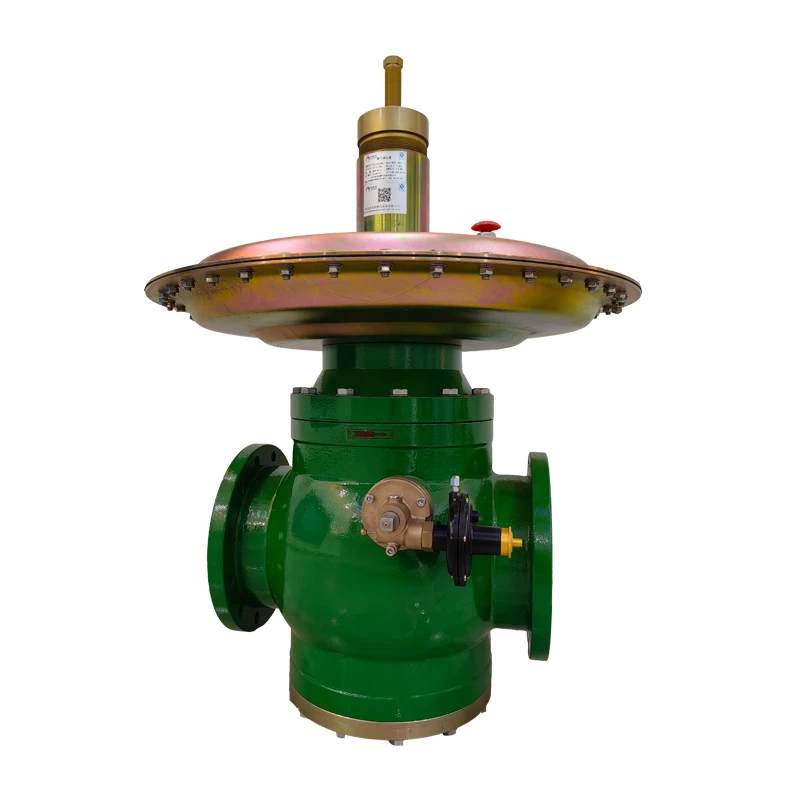
Nov . 16, 2024 23:58
Back to list
محطة تخفيض ضغط الغاز
Gas Pressure Reduction Station An Overview
Gas pressure reduction stations (GPRS) play a crucial role in the natural gas distribution network, ensuring that gas is delivered at the correct pressure and flow rate to consumers and industrial users. These facilities are essential for maintaining safety, reliability, and efficiency in gas supply systems, while also adhering to regulatory standards.
The Importance of Gas Pressure Reduction
Natural gas is transmitted through pipelines at high pressures, which are essential for transportation over long distances. However, when the gas reaches distribution networks and eventually consumers, it must be at a much lower pressure. Inadequately reduced pressure can lead to service disruptions, damage to appliances, or, in extreme cases, catastrophic failures. Therefore, gas pressure reduction stations are strategically placed throughout the gas distribution infrastructure to regulate this pressure safely and effectively.
Components of a Gas Pressure Reduction Station
A typical gas pressure reduction station consists of several key components
1. Inlet Control Valve This valve serves as the first point of control, allowing the incoming high-pressure gas to enter the station.
2. Pressure Regulators These devices are vital for reducing the pressure of the gas. They work by automatically adjusting the flow and pressure of the gas based on downstream requirements. Some stations utilize multiple regulators in series to achieve the desired pressure levels accurately.
3. Flow Meters Flow monitoring is essential for understanding gas consumption and ensuring that the correct amount of gas is delivered to users. Flow meters provide data that help in billing and managing the distribution system.
.
5. Control Panels Modern gas pressure reduction stations are equipped with sophisticated control panels that allow for remote monitoring and management. Operators can adjust settings, view real-time data, and respond to alerts from these central control systems.
محطة تخفيض ضغط الغاز

6. Exit Control Valve Once the gas pressure is regulated, the exit control valve allows the gas to flow into the distribution network at the required pressure.
Operation and Maintenance
The operation of a gas pressure reduction station must comply with strict safety regulations and guidelines. Regular maintenance is crucial for ensuring that all components function optimally and safely. This includes routine inspections, testing of safety devices, and calibration of pressure regulators and flow meters.
Many GPRS facilities adopt predictive maintenance practices, using data analytics and monitoring technologies to foresee potential failures before they occur. This proactive approach not only enhances safety but also reduces downtime and maintenance costs.
Environmental Considerations
As energy demands grow and environmental concerns escalate, the role of gas pressure reduction stations is evolving. Many facilities are integrating sustainable practices, such as utilizing energy-efficient components and exploring options for minimizing methane emissions during the pressure reduction process. By addressing these environmental aspects, GPRS can contribute positively to sustainability goals in energy production and consumption.
Future Trends
In the context of an increasingly interconnected energy landscape, gas pressure reduction stations may play a pivotal role in the transition towards more sustainable energy systems. The integration of renewable gas sources, such as biogas and hydrogen, will necessitate the adaptation of existing pressure reduction technologies. Innovations in automation, artificial intelligence, and remote monitoring will further enhance the operational efficiency and safety of these stations.
Conclusion
Gas pressure reduction stations are a fundamental component of the natural gas infrastructure, ensuring safe and efficient delivery of gas to consumers. As the energy landscape evolves, these facilities will continue to adapt, embracing new technologies and sustainable practices. Their role is not only to manage gas pressure but also to enhance the overall resilience of energy systems in the face of changing demands and environmental considerations. Through diligent operation and technological advancement, gas pressure reduction stations will remain integral to the reliability and safety of global energy distribution networks.
Latest news
-
Safety Valve Spring-Loaded Design Overpressure ProtectionNewsJul.25,2025
-
Precision Voltage Regulator AC5 Accuracy Grade PerformanceNewsJul.25,2025
-
Natural Gas Pressure Regulating Skid Industrial Pipeline ApplicationsNewsJul.25,2025
-
Natural Gas Filter Stainless Steel Mesh Element DesignNewsJul.25,2025
-
Gas Pressure Regulator Valve Direct-Acting Spring-Loaded DesignNewsJul.25,2025
-
Decompression Equipment Multi-Stage Heat Exchange System DesignNewsJul.25,2025

